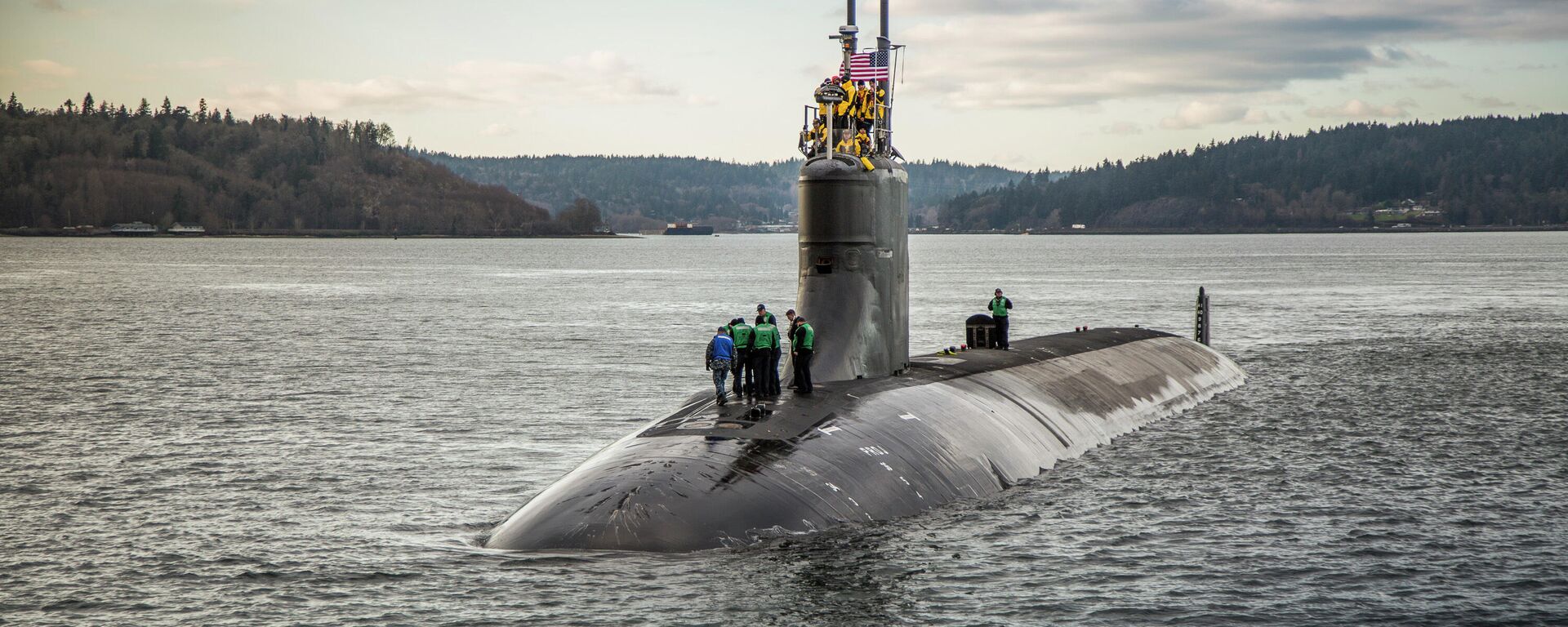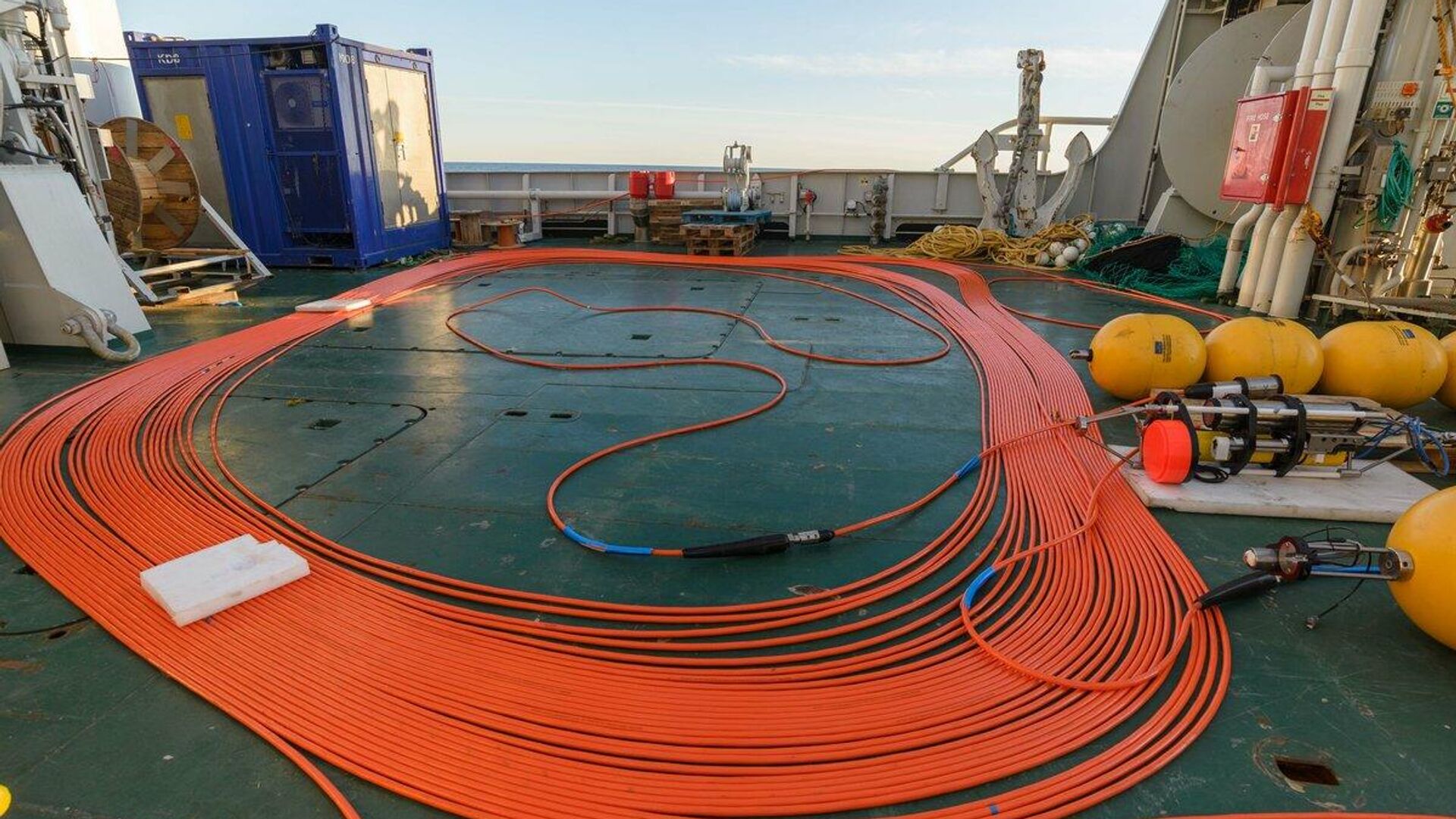https://sputnikglobe.com/20211109/norwegian-authorities-suspicious-after-4-km-long-length-of-surveillance-cable-gets-cut-disappears-1090602852.html
Norwegian Authorities Suspicious After 4 km-long Length of Surveillance Cable Gets Cut, Disappears
Norwegian Authorities Suspicious After 4 km-long Length of Surveillance Cable Gets Cut, Disappears
Sputnik International
Oslo operates a sophisticated network of underwater surveillance cables in the Norwegian Sea, keeping a lookout for potential Russian submarines as part of a... 09.11.2021, Sputnik International
2021-11-09T19:02+0000
2021-11-09T19:02+0000
2021-11-09T19:20+0000
norway
surveillance
cable
https://cdn1.img.sputnikglobe.com/img/07e5/0b/09/1090602826_0:38:1200:713_1920x0_80_0_0_994ba93b52457d4db0f7eb08109bb334.jpg
The Norwegian Institute of Marine Research has reported that a 4.3 km-long strategic Lofoten-Vesteralen (LoVe) offshore observatory fiber optic and electric cable network has been cut and possibly stolen.In a press release last Friday, LoVe project leader Geir Pedersen told media that “something or someone has torn out cables in outlying areas” of the network, resulting in power to the entire system being lost.According to Norway’s Dagens Naeringsliv newspaper, the observatory has faced problems since the spring of 2021, with state oil giant Equinor discovering that one of the system’s nodes had been dragged from its position and its cable cut and lost. In late September, the company discovered that another node had been moved, its cable also missing and its contacts and connection box torn off.Institute fellow Oystein Brun told DN that “the most important thing…now is to find out whether someone has actually attacked the cable, and whether it’s possible to prosecute whoever has destroyed this cable for us.”In addition to sea life, including whales, the area in which the cable is laid is known to be used by submarines – including those of Norway’s NATO allies and Russia, and by commercial vessels.Authorities are reportedly investigating the incident, and have declined to comment on the case.
https://sputnikglobe.com/20210513/moscow-decries-arctic-militarisation-concerned-about-recent-us-submarine-activity-near-russia-1082880043.html
https://sputnikglobe.com/20211104/top-three-naval-commanders-of-us-submarine-that-struck-seamount-relieved-of-duty-service-reveals-1090481794.html
norway
Sputnik International
feedback@sputniknews.com
+74956456601
MIA „Rosiya Segodnya“
2021
News
en_EN
Sputnik International
feedback@sputniknews.com
+74956456601
MIA „Rosiya Segodnya“
Sputnik International
feedback@sputniknews.com
+74956456601
MIA „Rosiya Segodnya“
norway, surveillance, cable
norway, surveillance, cable
Norwegian Authorities Suspicious After 4 km-long Length of Surveillance Cable Gets Cut, Disappears
19:02 GMT 09.11.2021 (Updated: 19:20 GMT 09.11.2021) Oslo operates a sophisticated network of underwater surveillance cables in the Norwegian Sea, keeping a lookout for potential Russian submarines as part of a broader NATO-led strategy aimed at hemming the Russian Navy into its home ports in the event of conflict.
The Norwegian Institute of Marine Research has reported that a 4.3 km-long strategic Lofoten-Vesteralen (LoVe) offshore observatory fiber optic and electric cable network has been cut and possibly stolen.
The strategic network, characterized as infrastructure “for research and surveillance of the ocean area,” features platforms on the seafloor fitted with sensors measuring methane emissions, climate change, as well as local sea life. It also has potential strategic and military capabilities, with all sounds, photos and other data collected by the system sent to the military’s Defence Research Establishment institute.
In a press release last Friday, LoVe project leader Geir Pedersen told media that “something or someone has torn out cables in outlying areas” of the network, resulting in power to the entire system being lost.
According to Norway’s Dagens Naeringsliv newspaper, the observatory has faced problems since the spring of 2021, with state oil giant Equinor discovering that one of the system’s nodes had been dragged from its position and its cable cut and lost. In late September, the company discovered that another node had been moved, its cable also missing and its contacts and connection box torn off.
Norwegian Institute of Marine Research director Sissel Rogne says it’s unclear what may have caused the incidents, with the cables used “very thick” and “very, very heavy.” The institute says a total of 4.3 km of the 66 km long cable network, weighing an estimated 9.5 tonnes, has disappeared.
Institute fellow Oystein Brun told DN that “the most important thing…now is to find out whether someone has actually attacked the cable, and whether it’s possible to prosecute whoever has destroyed this cable for us.”
In addition to sea life, including whales, the area in which the cable is laid is known to be used by submarines – including those of Norway’s NATO allies and Russia, and by commercial vessels.
Authorities are reportedly investigating the incident, and have declined to comment on the case.

4 November 2021, 19:41 GMT





